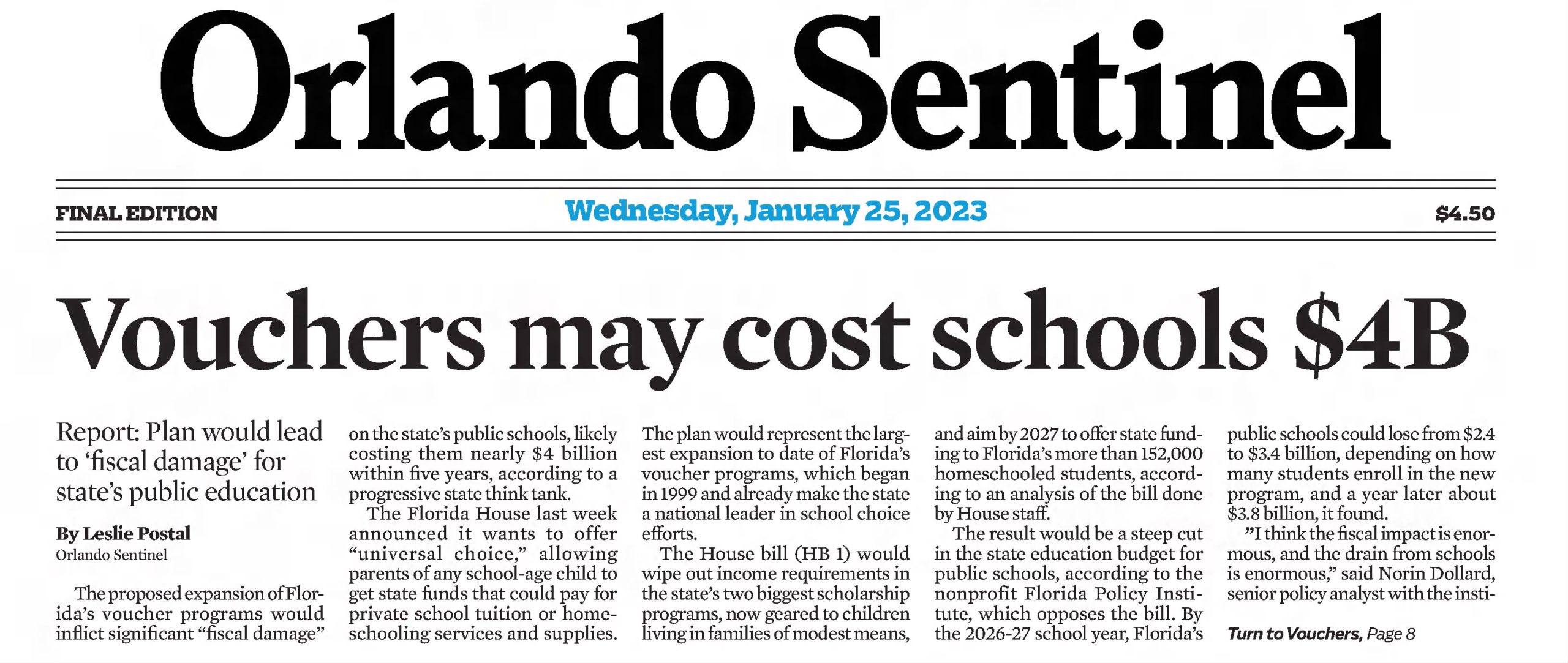As efforts to desegregate schools in the U.S. increased after the Brown v. Board of Education ruling, opponents to integration developed tactics to maintain segregation through other means. In 1959, for example, the school district in Prince Edward County, Virginia, closed its segregated public schools and provided vouchers to private schools for white students rather than integrate its schools. Under the guise of “choice,” this began a long trajectory of states – including Florida – using vouchers to use public taxpayer dollars to fund private school tuition, and ultimately furthering the under-funding of public schools.
Florida established its voucher program in 2001 with the Florida Tax Credit Scholarship (FTC) to provide opportunities for children from low income families to attend private schools or attend public schools outside of their zoned school. Over time, the sources of revenue for the FTC have expanded, and funding from the Florida Education Finance Program (FEFP), was added. The eligibility has also expanded over time to include children with disabilities through the Gardiner and McKay Scholarships. In 2019, the FEFP funded scholarships revamped existing scholarships into two programs. The first of these, the Florida Empowerment Scholarships for Education Options, extended eligibility for families with incomes up to 375 percent of the federal poverty level. The second, the Family Empowerment Scholarship for students with Unique Abilities, was established for students with disabilities and provides vouchers for students with disabilities who formerly received Gardiner and McKay scholarships. The increase in income eligibility led to expenditures of $1.1 billion in 2019 and an estimated $4 billion for the 2023-24 school year.
In 2023, the Florida Legislature fast-tracked a bill that put the growth of vouchers into hyper drive. HB 1 expanded the voucher program to all children in Florida eligible to attend K-12, regardless of family income. Essentially, HB 1 allows for even the wealthiest Florida families – including those who had never enrolled in public schools – to obtain $8,600 per student to fund private school tuition. Moreover, the funding for private school vouchers comes directly from the FEFP, the formula that funds public schools.
The expansion of vouchers has decreased funding for the public education system while simultaneously increasing the responsibilities of that system. As a result of this bill, Florida funds two separate systems – traditional public schools and a private system that is not held to the same standards and laws.
The true cost of vouchers, however, goes beyond the financial drain on public schools: given that a majority of Florida’s public K-12 students are children of color, disinvestments from Florida’s public schools will further widen racial inequities.
